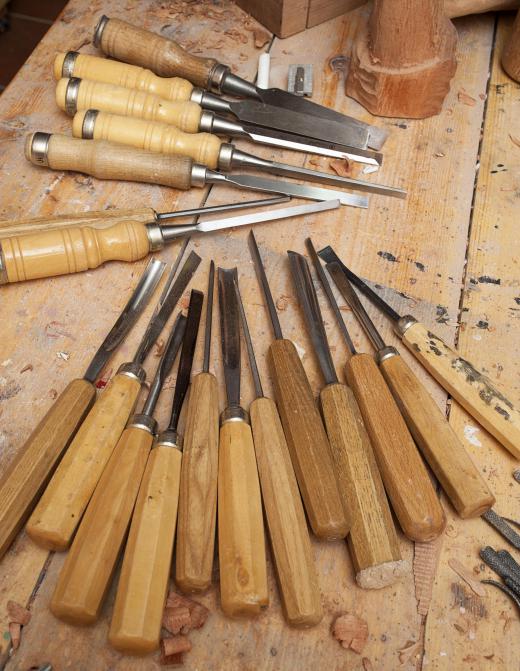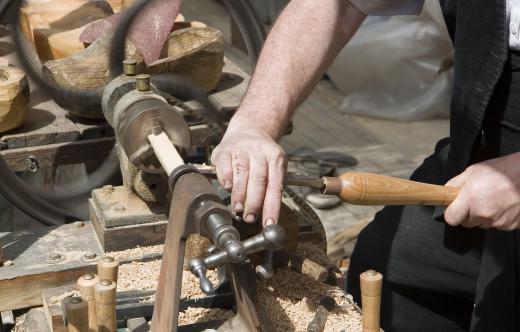Lathe tools cut, form or remove material from stock that is generally rotated about a primary axis of a lathe. These tools come in a variety of sizes and shapes; the types of tools depend largely on the stock material, the types of cuts desired and the type of lathe. Lathe tooling can be separated into two broad categories: wood late tooling and metal lathe tooling. Both types of tools share a common history, and many of the terms are interchangeable between both types.
The largest differences in tooling are how these appear and how these are held. Wood lathe tools are generally long shaped pieces of high-carbon steel or tool steel with a handle at one end. These are largely used with the assistance of a steady rest and then manipulated by hand to achieve the desired profile. Metal lathe tooling is generally shorter and made from tool steel or carbide, and it usually is clamped in and rigidly held in place by a tool post.

Lathe tooling can also be described by the function. Exterior tools will generally cut, form and shape the outside of the stock material. Inside tools will work to remove material from the interior of the stock. When tools are not rigidly supported and/or not properly aligned, a defective workpiece, broken and damaged tooling or injury to the lathe operator might result.

Some lathe tools might not be interchangeable with one another, because the cutting or forming geometries are closely controlled for use with a particular material. Sometimes lathe tools might have removable inserts; this can provide the operator with a limited flexibility which, if the inserts are replaced, usually results in minimal changes to the entire turning operation. Lathe tools are designed specifically for a particular lathe operation.
It often is better to classify tools by their function, and variations of the tooling enable the user to generate the required profile. As an example, a part might need both internal and external threads. A lathe threading tool is used to generate both, but the outside tool is specifically made for external threads, whereas the inside tool is different both in size and shape than its exterior counterpart. In this instance, a similar feature is generated for each tool, but each tool is very different.
External tools cut the material from the outside of the part as the material is passed over. The speed at which material is removed, in all instances, is governed by the tooling type, rotational speed of the lathe and the feed of the tool itself. Examples of some external lathe tools include turning, facing, grooving/parting/undercut and vee grooving tools.
Internal lathe tools are largely used inline with the spindle axis of the lathe itself. This is not always true, because some lathes have secondary or tertiary spindles or axises that provide alternative orientations. Some internal lathe tools include drills, reamers, boring bars and taps.
There also are specialized lathe tools; these are usually single-function tools that are intended to accomplish one particular task. Specialized tooling is desired because it can replace multiple independent tools or easily create a difficult feature on a part. Examples of more specialized tooling include broaching, knurling, forming, burnishing and multi-stepped drilling or boring tools.
Sometimes tools are used in an unconventional manner. For instance, if an external chamfer is required, a plunge cut with a vee grooving tool would easily accomplish this task. If a vee grooving tool is not already setup on the machine, however, the lathe operator can generate the same profile shape by using an alternative tool. For instance, if an external grooving tool was available, and if the operator is skilled enough, this tool can be skillfully manipulated to generate this same chamfer profile. This would be considered unconventional, but this is usually done to save the operator from extra setup time and as an effective way to reduce additional tooling expenses.
